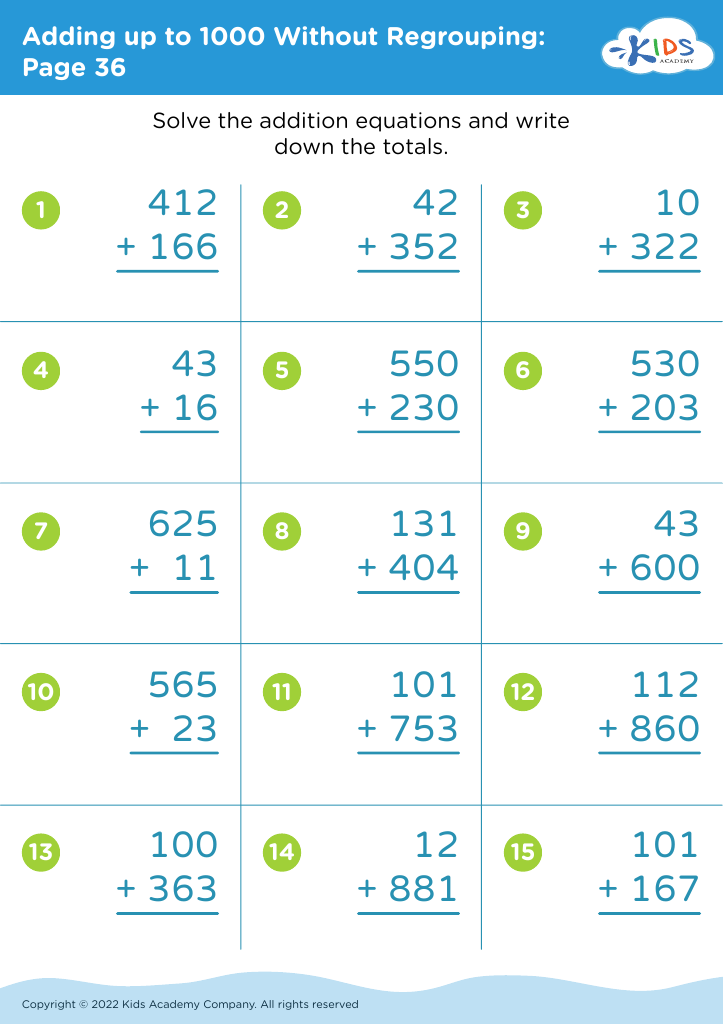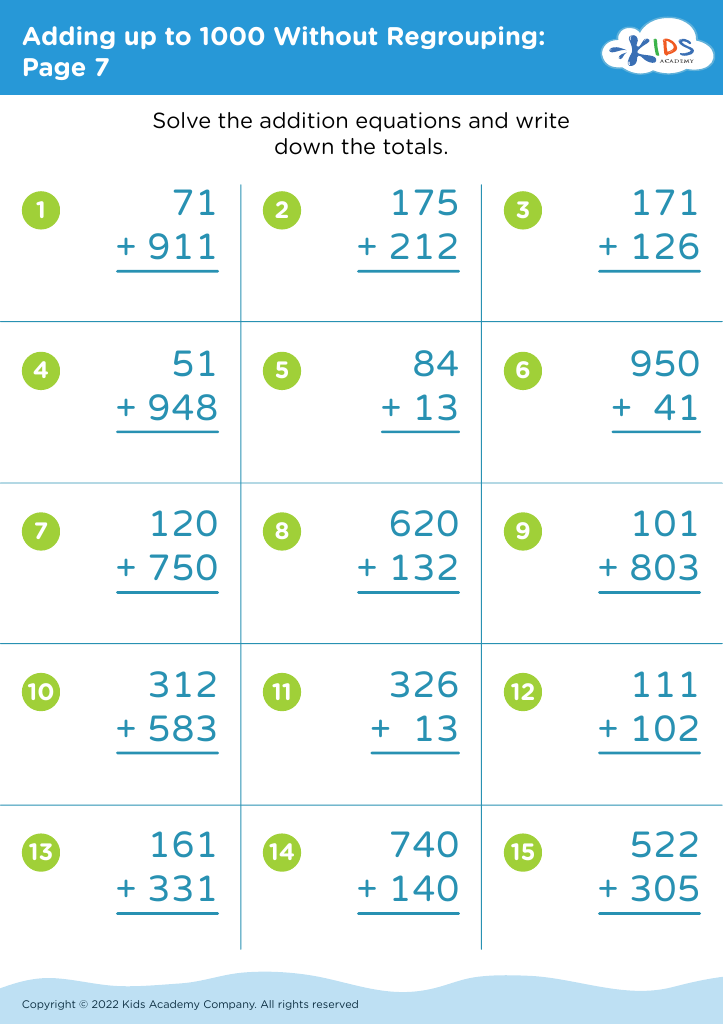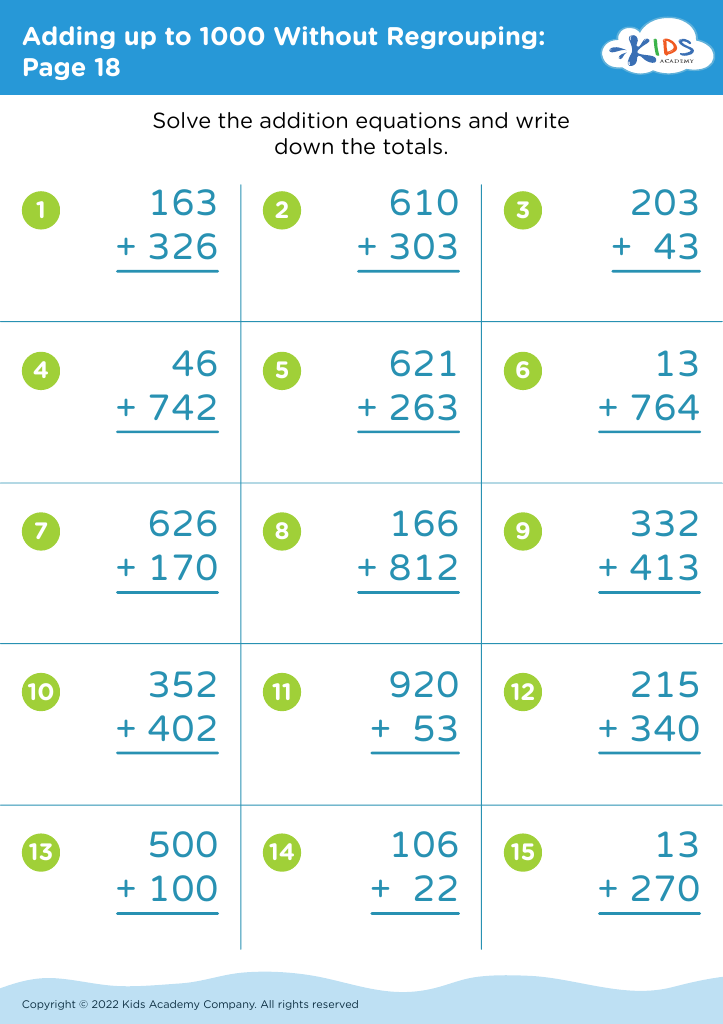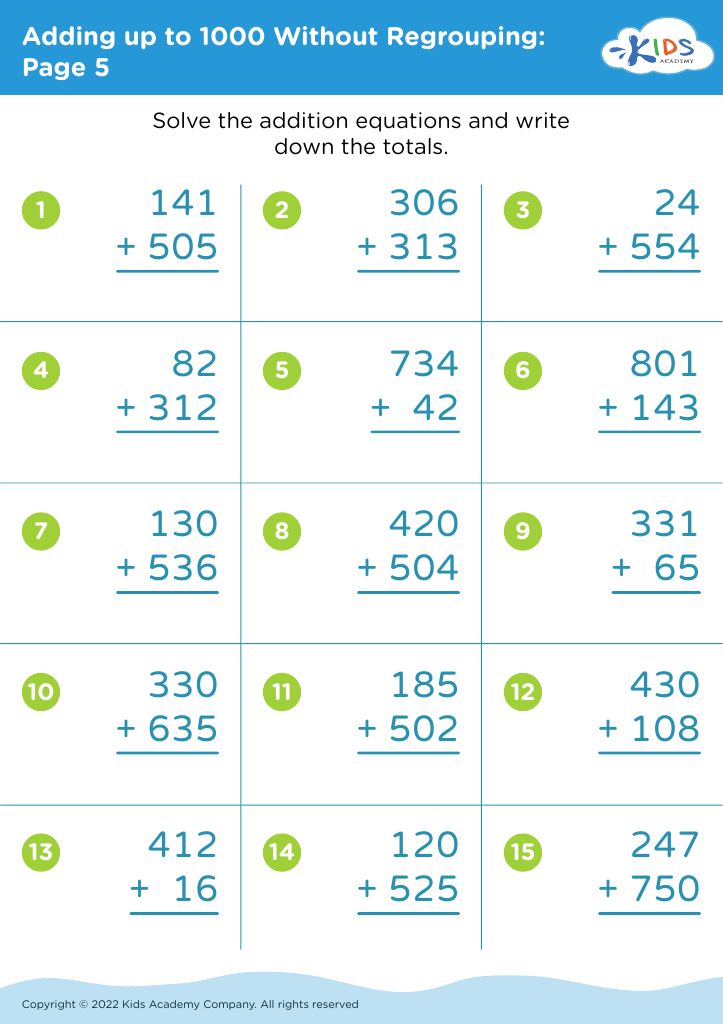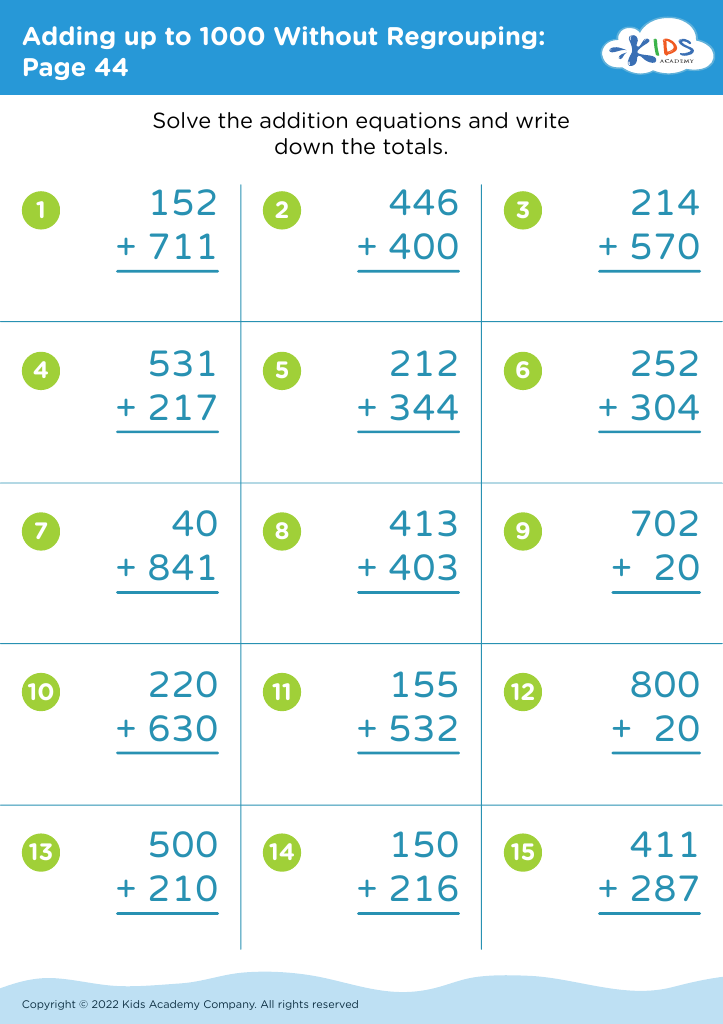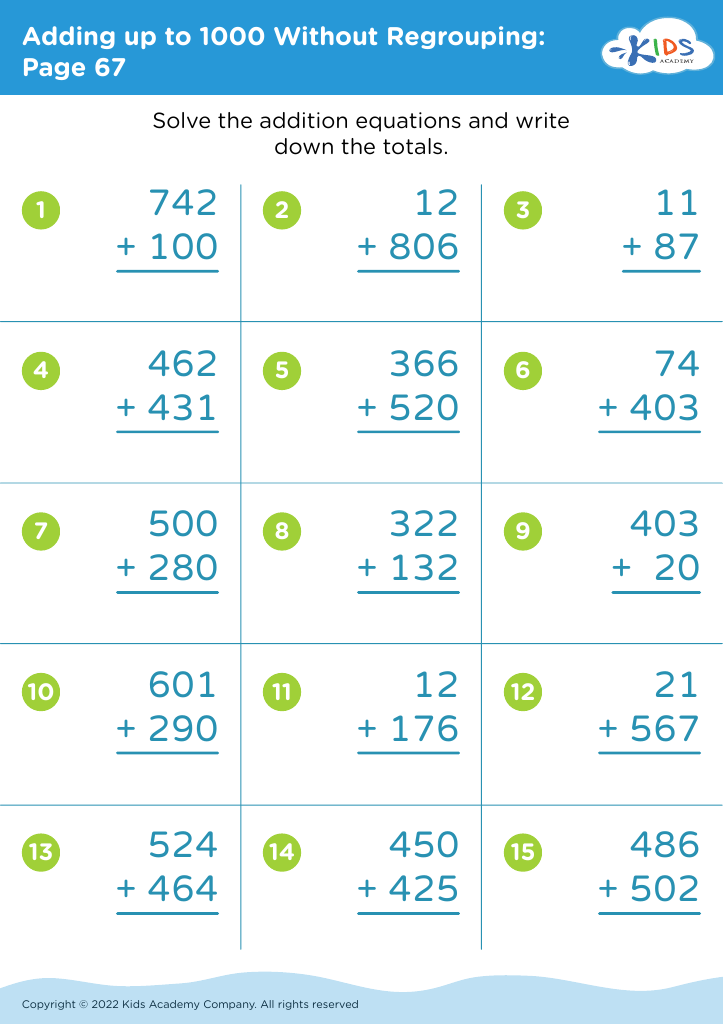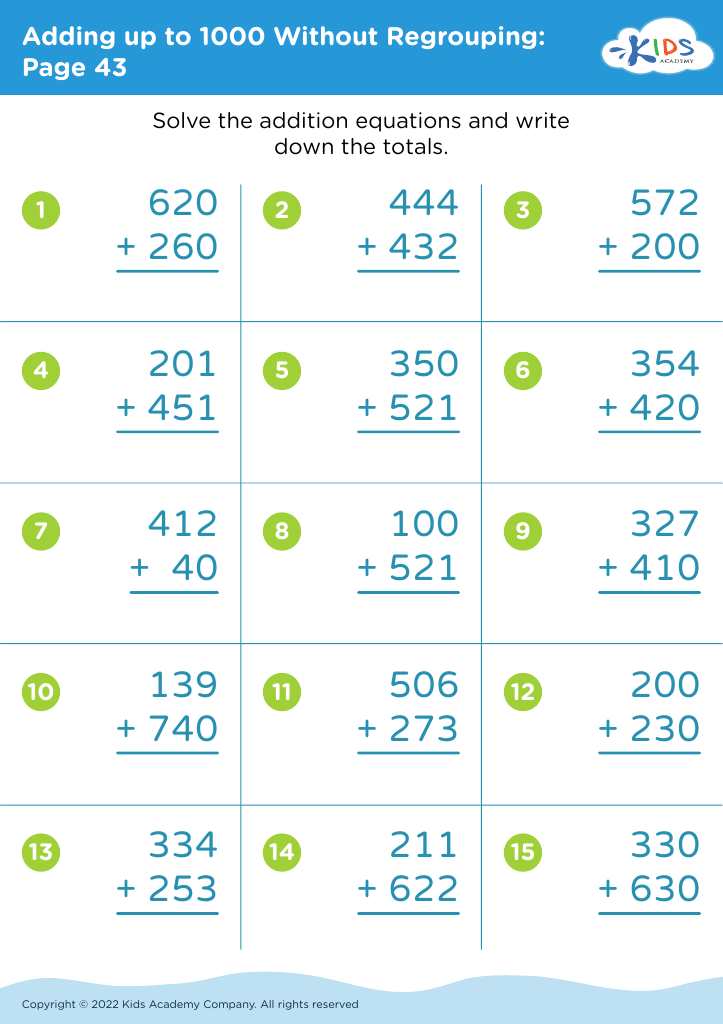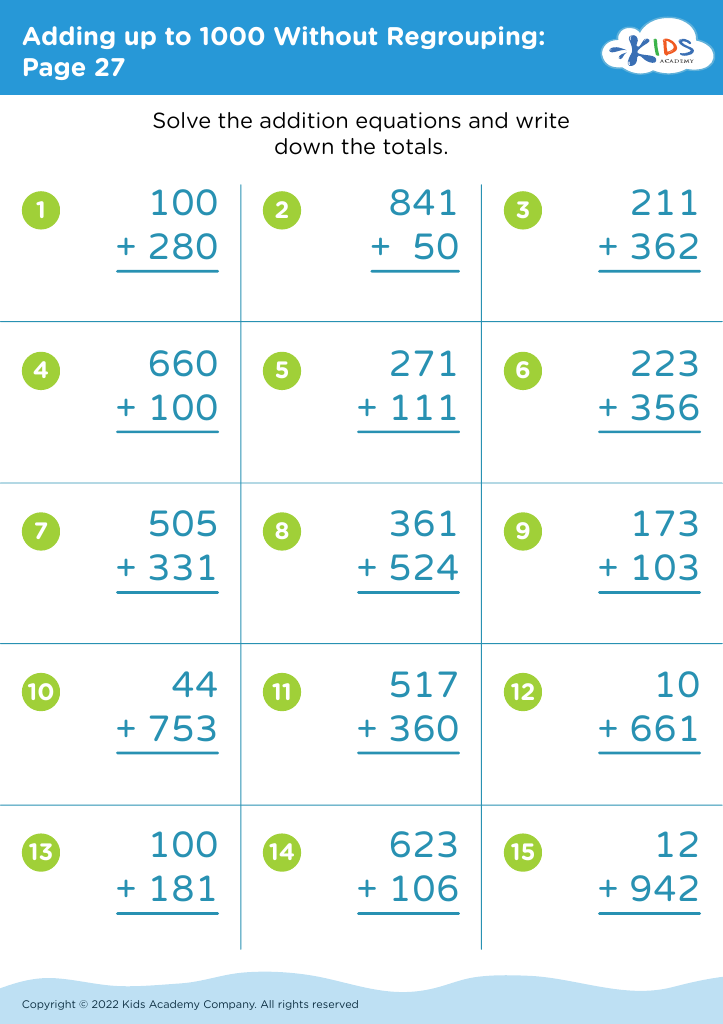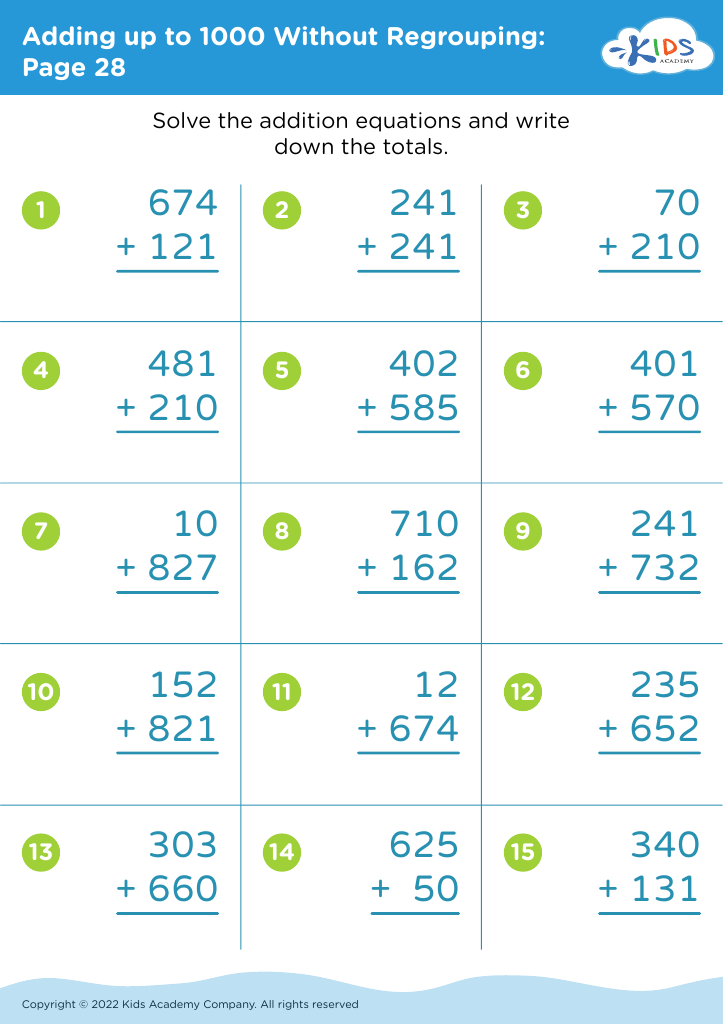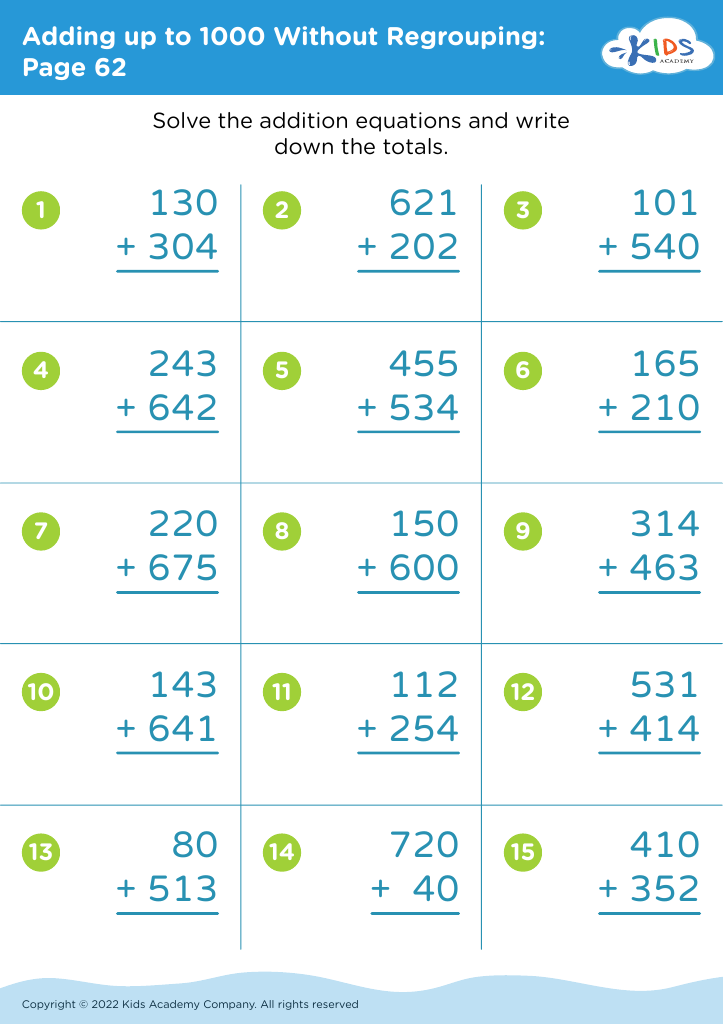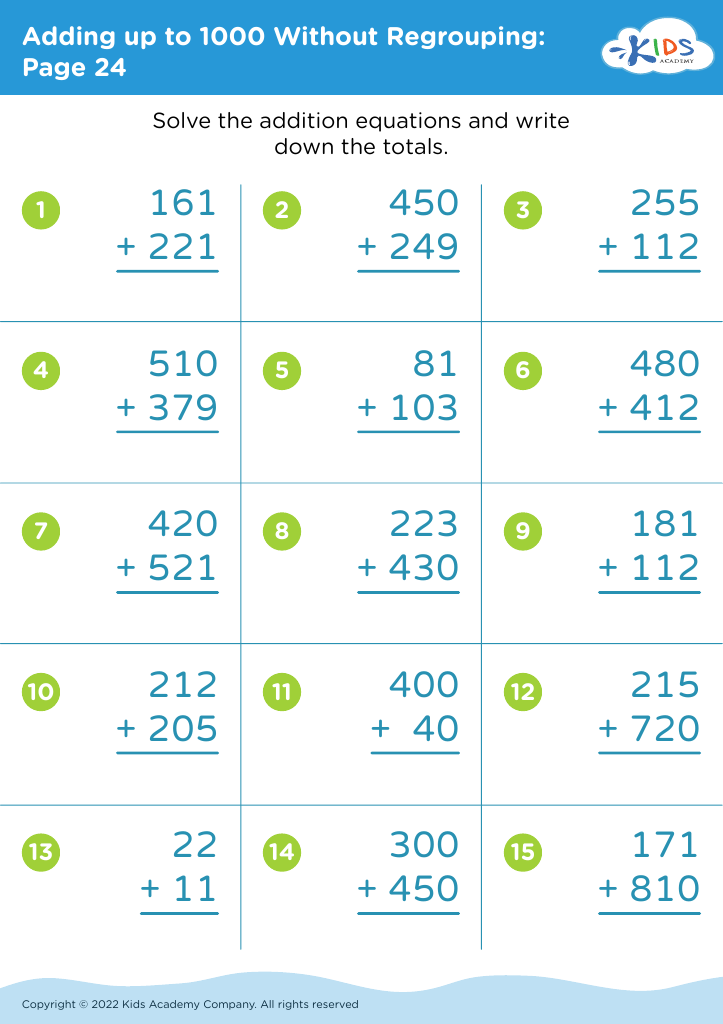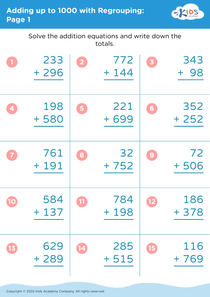Understanding fractions Adding up to 1000 Without Regrouping Worksheets for Ages 7-8
13 filtered results
-
From - To
Discover our interactive "Understanding Fractions: Adding Up to 1000 Without Regrouping" worksheets designed for children aged 7-8. These engaging resources help young learners grasp the concept of fractions while developing their addition skills. With a focus on combining fractions and whole numbers, students will build a strong foundation in math, enhancing their confidence and problem-solving abilities. Our worksheets are crafted to encourage independent practice, making learning fun and effective. Ideal for home or classroom use, these materials are essential for nurturing strong mathematical skills at an early age. Explore the joy of fractions and addition today!
Understanding fractions and their relationships to whole numbers is fundamental for children aged 7-8, especially when adding up to 1000 without regrouping. This proficiency builds a strong mathematical foundation, enhancing critical thinking and problem-solving skills. At this age, children are developing their conceptual understanding and reasoning abilities, which are vital for future mathematical concepts.
Learning to add fractions contributes to a child's numerical literacy, offering insight into how numbers and fractions interact. For instance, when children comprehend that fractions can represent parts of a whole, they begin to see the relevance of math in everyday life – like sharing pizza or measuring ingredients while cooking.
Moreover, working with fractions prepares students for more complex mathematics in later grades. By learning to add fractions without regrouping, they develop accuracy and confidence, enabling them to confront more challenging tasks fearlessly. Additionally, it fosters a sense of achievement; when children master a substantial skill, it promotes enthusiasm for learning.
Ultimately, parents and teachers should prioritize this area of learning because it equips children with essential skills and mindsets, instilling a lifelong appreciation for mathematics as they progress through their education.
